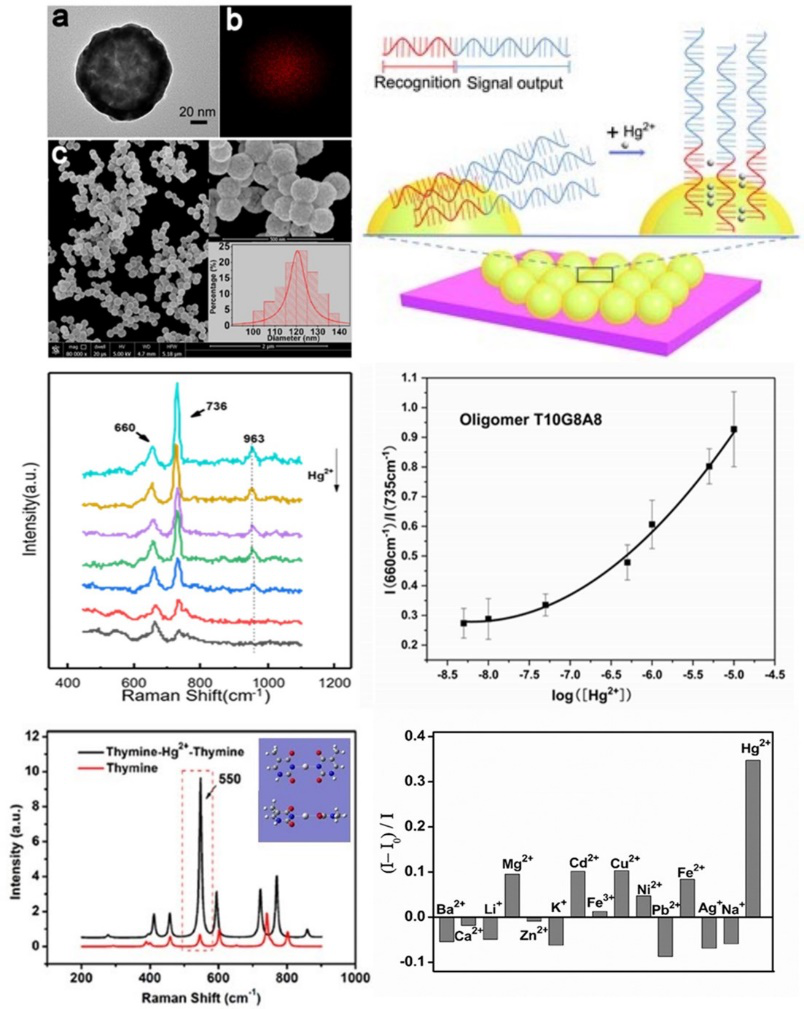
Recently, a research team led by Prof. HUANG Qing from Institute of Technical Biology & Agriculture Engineering, Hefei Institutes of Physical Science, developed a label-free SERS method to detect Hg(II) selectively and semi-quantitatively in real water samples.
The results were published in Sensors and Actuators B: Chemical entitled "A label-free SERS approach to quantitative and selective detection of mercury (II) based on DNA aptamer-modified SiO2@Au core/shell nanoparticles".
Mercury is a highly toxic heavy metal which can cause great harm to human beings and organisms. Hg(II) is a common form of mercury existing in the environment. It is of great urgency and necessity to inspect mercury ions in the environment in a fast, reliable and efficient way.
As an emerging technology for rapid, non-destructive and trace chemical detection, surface enhanced Raman spectroscopy (SERS) has received extensive attention and been applied practically. However, it is difficult to detect Hg(II) specifically and relative-quantitatively based on SERS technology.
Looking at this, HUANG and his coworkers developed a prototype of label-free SERS sensor, based on the formation of T-Hg2+-T pairs and the corresponding orientation variation of DNA on Au shell surface, to detect Hg2+ in aqueous solution quantitatively and selectively.
They functionalized the surface of SiO2@Au nanoparticles with thymine (T)-rich aptamer which can capture mercury ions effectively, since thymine bases can interact with Hg2+ ions to form T-Hg2+-T structure specifically.
The experimental results showed that with interaction of Hg2+ ions and the thymines between the adjacent single-stranded DNA (ssDNA), the DNA molecule adopted vertical orientation, resulting in increase of Raman intensity ratio I(660 cm-1)/I(736 cm-1) with increase of Hg2+ concentration.
The label-free SERS sensor could sensitively respond to Hg2+ ions within a wide concentration range (from 1×10-8 to 1×10-3 M).
This work demonstrates that proper design of aptamer-modified SiO2@Au core/shell NPs can be utilized for label-free SERS detection of heavy metal ions in the environment.
This work was supported by the National Basic Research Program of China, the National Natural Science Foundation of China.

The characterization of the SiO2@Au nanoparticles, with the schematic representation of the label-free SERS detection method for Hg2+, and the analysis of the SERS signal changes of the aptamers responding to Hg2+ in water (Image by ZHONG Jie)

86-10-68597521 (day)
86-10-68597289 (night)

86-10-68511095 (day)
86-10-68512458 (night)

cas_en@cas.cn

52 Sanlihe Rd., Xicheng District,
Beijing, China (100864)

